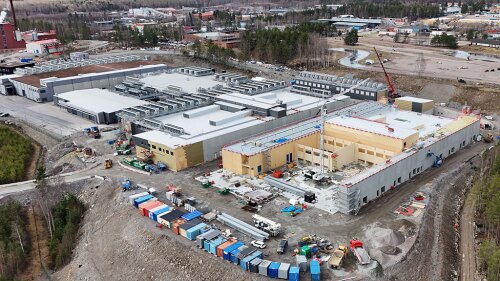Fort Lauderdale, Florida, is experiencing increased flooding of local streets, even without major rain events or high winds, and residents are seeking answers. While many are calling on the city to elevate certain streets above the floodplain, ULI Advisory Services panel of experts advise that road elevation is one of many tools in a city’s resilience toolbox to consider when addressing roadway flooding.
“There’s a lot of other things that [the city] could and should be doing before they elevate roads, which can cause disruption and can be costly” noted Jim Heid, author and founder of Urban Green, an advisory firm based in Sonoma County, California. “[Road elevation] is probably the solution of last resort.” Even if higher elevation is deemed the best option for certain roadways, such projects need to be prioritized equitably.
Heid was the chair of ULI’s Advisory Services Panel for Fort Lauderdale, convened in partnership with ULI Southeast Florida/Caribbean from March 10-14, 2024, to provide recommendations on how best to mitigate the growing risks of persistent street flooding and offer an approach for evaluating road elevation projects on city-owned streets.
The ULI panel collaborated with local leaders, conducted a community listening event, toured key areas with local experts, and held stakeholder interviews—including residents, city leaders, public works staff, and Commission members. Heid alongside Dr. Nancy Gassman, the city’s deputy director of public works and chief resilience officer for sustainability, delivered the panel’s final recommendations to the commission on November 19, 2024. The commission approved moving forward with the budgeting process for the road elevation master plan, marking a key milestone for the city’s Fortify Lauderdale initiative.
More streets become submerged as flooding spreads inland
Some neighborhoods in Fort Lauderdale now experience flooding even on sunny days with mild weather. High tides can overwhelm local canals and spill into nearby streets with nowhere to go. And during severe weather events such as hurricanes, the storm surge continues to move farther and farther inland.
“We interviewed some people that talk about the 10 or 15 years they’ve lived there,” Heid said. “Every year, the flooding now is going up to the next house up the block, and the next.”
Elevating streets above the floodplain may appear to be the most immediate and obvious solution. But that option can present challenges and notable expense.
Increasing road elevation could send excess water into nearby homes and businesses if existing structures are below the new height of the road. Engineers also need to consider the infrastructure beneath a road or street. In some cases, underground infrastructure must also be elevated or replace. “What seemed like a road elevation project may now include a complete upgrading of all underground infrastructure,” Heid said.
Lessons from other coastal cities
To find solutions to these problems, Fort Lauderdale can look to other Florida communities that face similar challenges.
“Communities like Miami Beach, Florida, have raised a significant amount of roadway. They learned a lot of important lessons about the complexities of these projects,” says Alec Bogdanoff, principal and co-founder of Brizaga, a consulting firm based in Fort Lauderdale. Bogdanoff emphasized that Fort Lauderdale was encouraged to continue efforts to build higher seawalls and install “tidal valves” in the storm sewers to prevent surges from backing up into neighborhoods.
In addition, there are other strategies to minimize flooding that don’t require elevating streets. For example, a vacant lot on a street that experiences frequent flooding can be modified to become a catchment for heavy runoff.
“We talked about creating ‘resilience parks,’” Heid said. “then we’ve got a place for the water to go while creating a community asset during normal, dry conditions.”
If after other remediation efforts it is still considered necessary to elevate a particular street, it needs to be done in a way that the resulting runoff doesn’t cause additional problems. Plus there should be clear, public criteria for which roads are to be elevated. “Is this a road that serves emergency vehicles?” Heid asks. “Does it go to the airport? Does it go to somewhere that is really important to the community?”
Key recommendations from the advisory panel include:
Comprehensive Approach to Climate Adaptation: Road elevation should be part of a larger set of climate adaptation strategies. The city is advised to take a long-term, comprehensive approach, tackling this complex issue through a combination of infrastructure, policy, and programmatic solutions.
Exhaust Other Solutions First: Elevating roads is a costly endeavor and may push floodwaters to other areas. The panel recommends exhausting all other flood mitigation options before considering road elevation.
Guiding Principles for Road Elevation Projects: When considering road elevation, the following principles should guide decision-making:
- Public safety as the top priority
- Stormwater improvements are essential
- Protection of utilities
Priority Criteria for Evaluation: The panel identified two critical factors that should receive the highest priority in evaluating road elevation projects:
- Whether the roadway serves as an evacuation route, critical connector, or provides access to public facilities.
- Whether the roadway lies within the 100-year floodplain.
Holistic Evaluation Process: The criteria for evaluating road elevation should be part of a larger process that includes assessing other resilience measures, evaluating the scope and feasibility of projects, and identifying necessary funding before proceeding with road elevation.
Attracting Funding: To secure funding for construction, the panel recommends creating a compelling message to convey the need for road elevation, developing strategic partnerships, and building a coalition of support. Funding efforts should be seen as part of a long-term commitment to flood resilience.
Establishing a Flood Resilience Policy: The city should establish and implement a flood resilience policy to outline priorities, guide decisions, and communicate long-term goals.
Prioritize Transparency and Communication: Ongoing efforts and successes in addressing flood risks should be communicated consistently, ensuring transparency and community engagement throughout the process.
Related Resources:
- Fort Lauderdale Advisory Services Panel
- ULI Western New York, Local Stakeholders, and Advisory Services Program Seek to Revive Buffalo’s Historically Black Jefferson Avenue Corridor
- ULI Western New York, Local Stakeholders, and Advisory Services Program Seek to Revive Buffalo’s Historically Black Jefferson Avenue Corridor






